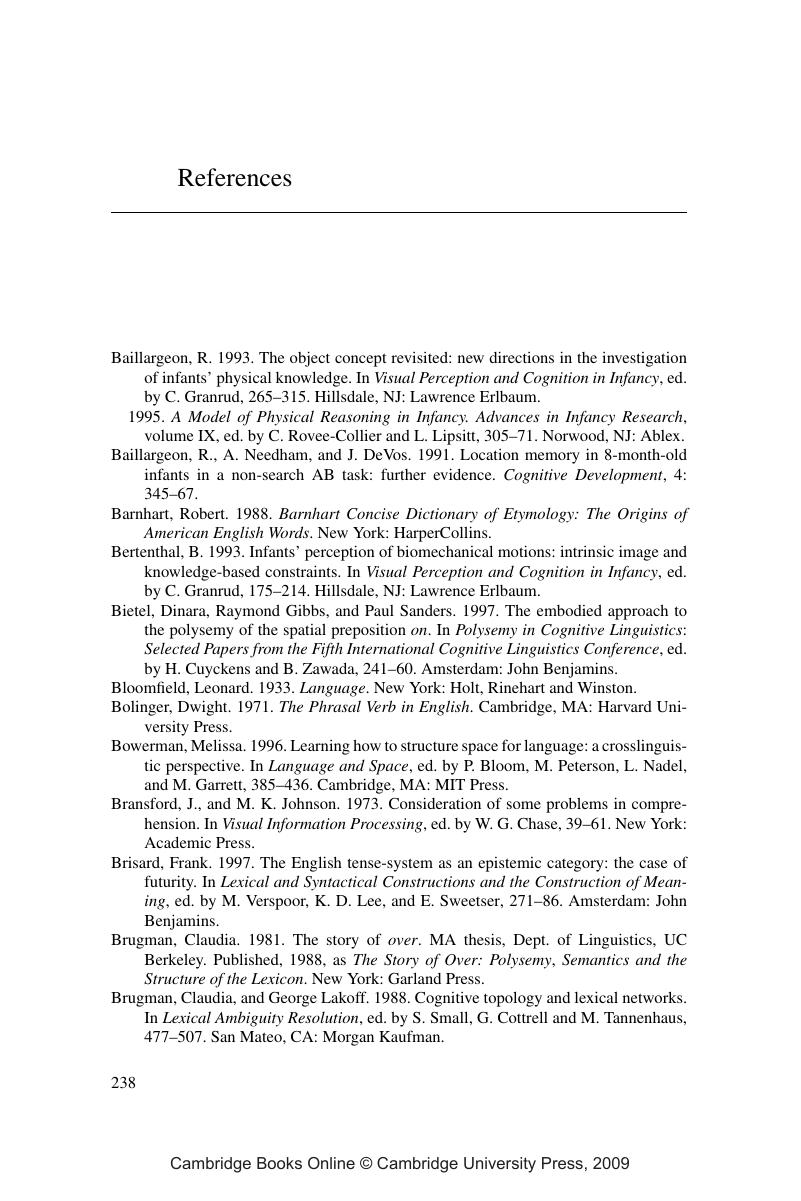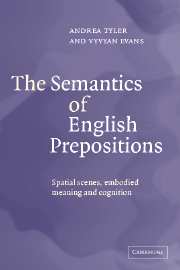Book contents
- Frontmatter
- Content
- Preface
- Acknowledgements
- 1 The nature of meaning
- 2 Embodied meaning and spatial experience
- 3 Towards a model of principled polysemy: spatial scenes and conceptualization
- 4 The semantic network for over
- 5 The vertical axis
- 6 Spatial particles of orientation
- 7 Bounded landmarks
- 8 Conclusion
- References
- Index
- References
References
Published online by Cambridge University Press: 22 September 2009
- Frontmatter
- Content
- Preface
- Acknowledgements
- 1 The nature of meaning
- 2 Embodied meaning and spatial experience
- 3 Towards a model of principled polysemy: spatial scenes and conceptualization
- 4 The semantic network for over
- 5 The vertical axis
- 6 Spatial particles of orientation
- 7 Bounded landmarks
- 8 Conclusion
- References
- Index
- References
Summary

- Type
- Chapter
- Information
- The Semantics of English PrepositionsSpatial Scenes, Embodied Meaning, and Cognition, pp. 238 - 245Publisher: Cambridge University PressPrint publication year: 2003



